Forty years ago this month in 1983, I started my business, originally called Freelance PhotoImages.
Read MoreShupeStudios Turns 40

Forty years ago this month in 1983, I started my business, originally called Freelance PhotoImages.
Read MorePhotographing educational institutions presents a unique blend of challenges and opportunities for photographers, requiring an eye for detail, composition, and storytelling. Whether they are schools, colleges, or museums, these institutions serve as centers of learning, community, and growth. Capturing their essence through photography requires more than technical skill—it demands understanding the institution's ethos and purpose.
Read MoreAI and advanced post-production technology have opened up a whole new world where I can obtain effects and enhancements that are simply not possible with the camera alone. In fact, technology has become an indispensable tool and has changed the way I work.
Read MoreThroughout the year I take thousands of photos, actually tens of thousands, so it is difficult to cull the list of favorites to just ten. Sometimes a pictures makes my top ten list not simply because of the picture itself, but because of the circumstances surrounding it. For example, it may have been that a photograph was very difficult to get – or that it took me hours to get it just right. In other cases it may have been serendipity and I just happened to be there at the right time. In some photos, I was able to take something that wasn’t particularly extraordinary and through the magic of the lens, make it extraordinary.
Read MoreBuilding owners, architects, and property managers often consider winter a dead time when photography comes to a standstill. In fact, winter presents a compelling opportunity for architectural photography along several dimensions. For exteriors, the time of year post-autumn but before snow arrives offers an exceptional window for photographers to capture the essence of urban landscapes with greater clarity and focus than they sometimes achieve at other times of the year. Winter is an excellent time of year for interior shots due to lighting and scheduling. Lastly, winter shots can be effectively employed using teaser campaigns to build anticipation for the spring and summer months. Along many dimensions, as we discuss below, winter can be leveraged for exceptional photography and engaging marketing opportunities.

Exterior Photography
In the absence of a leafy canopy, winter offers a unique perspective for photographers, allowing them to showcase architecture and architectural elements that may be obscured during other seasons. The time of year after the leaves have dropped but before snow arrives is sometimes referred to as stick season by photographers. During stick season, tree-lined streets, which often restrict the view of buildings at ground level, are now open and allow a much better view of building architecture.

During summer the first two stories of this building are almost completely obstructed

Likewise, these suburban buildings are substantially hidden during summer
Stick season can be particularly advantageous in urban and suburban areas, where the stark contrast between buildings and the clear winter sky can create a captivating visual narrative. This may be done during the day with a clear blue sky, at night, or at magic hour (just after sunset) as shown below.

Interior Photography
Another way to take advantage of the treeless winter scenery is to concentrate on interior shots. The absence of foliage outside and lower sun angles allow more natural light to permeate indoor spaces, illuminating architectural details and creating a warm, inviting atmosphere. This can be especially effective in highlighting the coziness of cafes, the grandeur of historical buildings, or the sleek design of modern interiors.
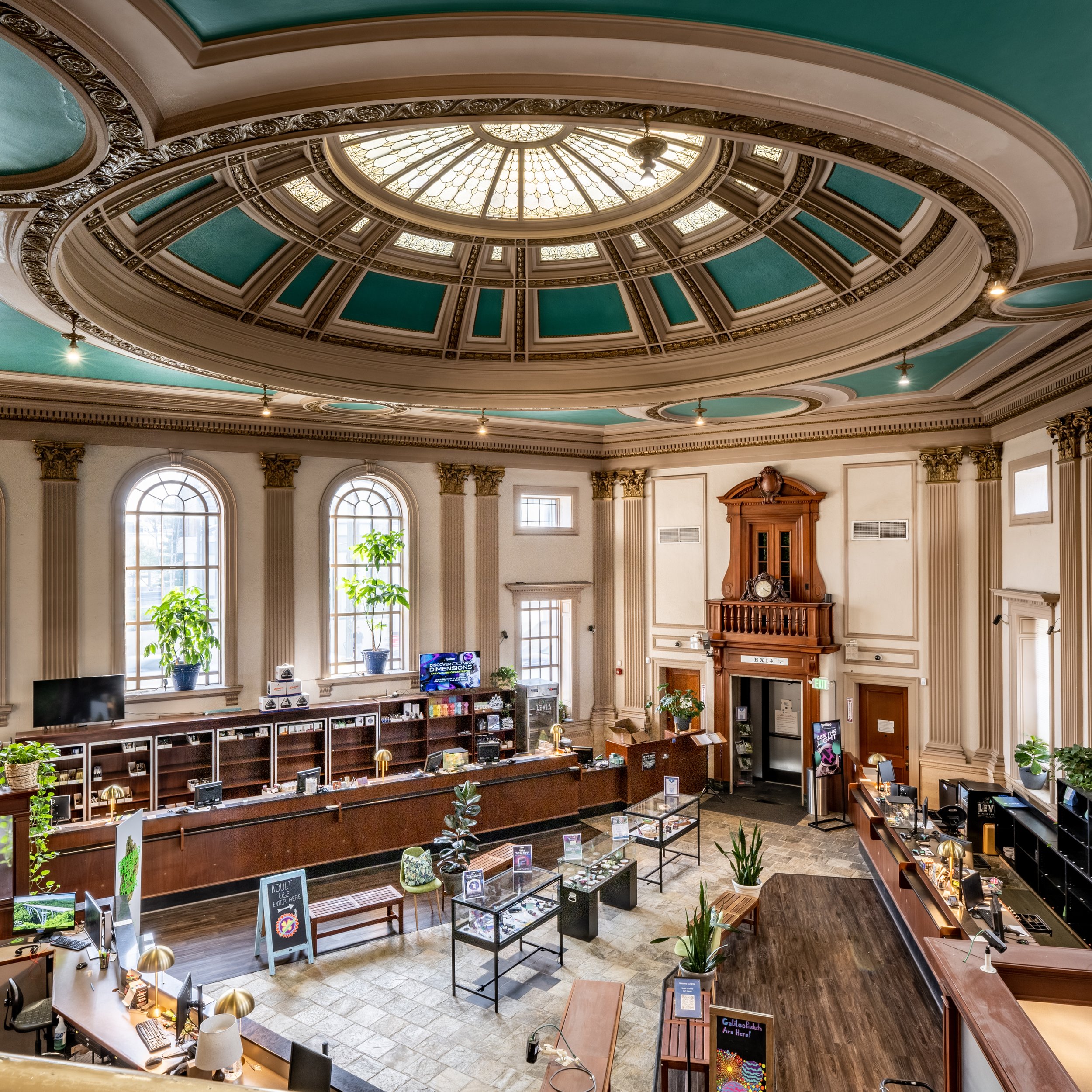
Photographers can also play into seasonality by juxtaposing the cold, wintry exterior against the interior's warmth and vibrancy, which adds depth to visual storytelling. This sense of coziness is particularly effective in residential buildings.

Teaser campaigns
Winter shots can be strategically employed in teaser campaigns, offering a unique opportunity to generate anticipation for spring and summer events or openings. Done correctly, the teaser campaign creates a tension between what is happening now and the promise of completion or a resurgence as spring arrives. Three approaches can work well depending on the objectives and the building architecture.
Contrast and Transition: Create a visual narrative emphasizing the contrast between winter and the promise of spring/summer. Incorporate elements like closed umbrellas, snow-covered outdoor furniture, or frosted windows to symbolize the temporary pause before a spring resurgence.
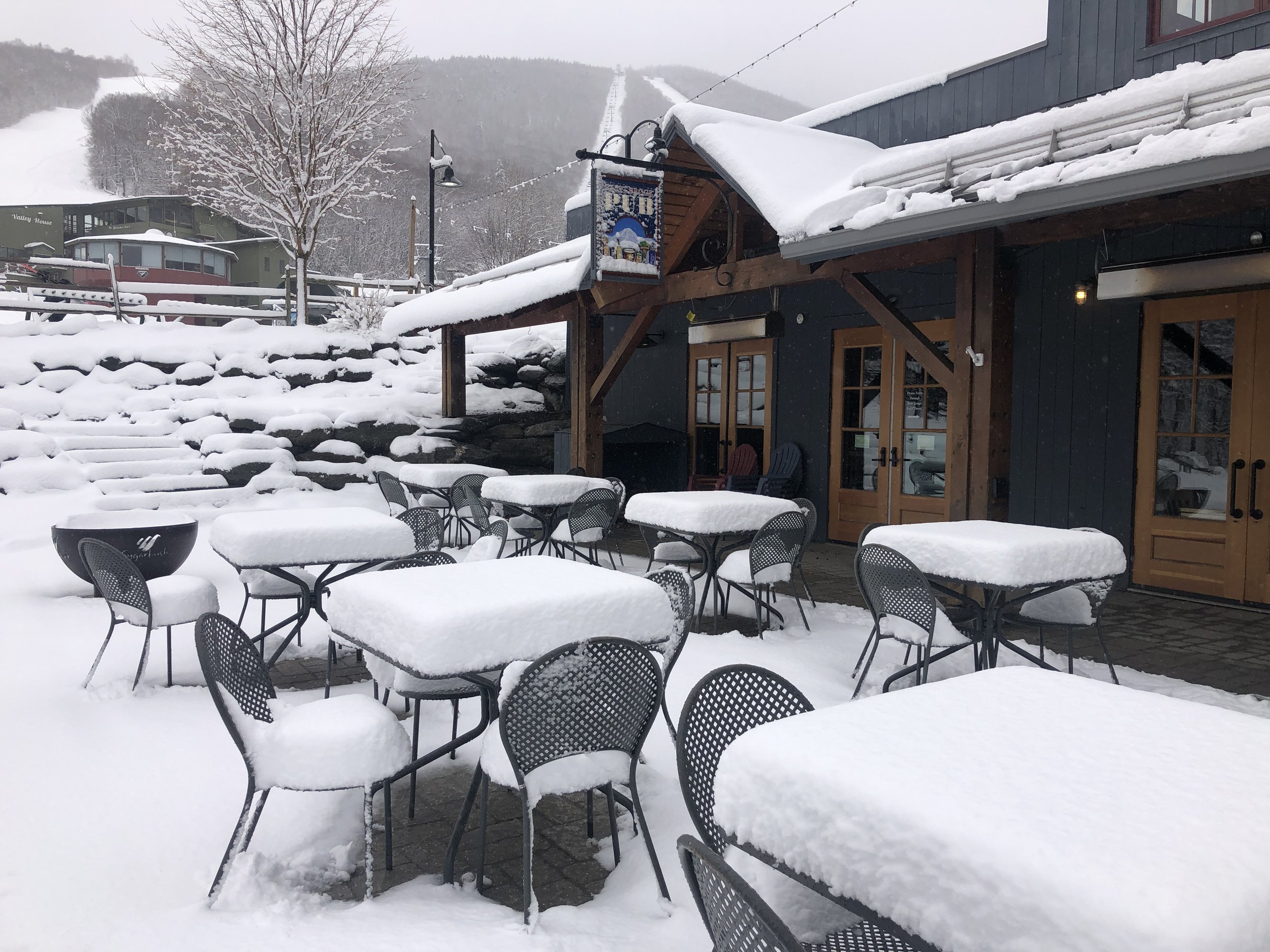
Gradual Reveal: Release teaser images gradually, building anticipation over time. Begin with winter shots that evoke a sense of calm or stillness and progressively reveal more hints of the impending seasonal transformation. Set up as a progression; this gradual reveal can effectively engage your audience throughout the winter months leading up to spring. You may want to incorporate subtle elements that hint at the upcoming change, such as budding flowers, outdoor seating preparations, or glimpses of vibrant spring colors.

Emotional Connection: Tap into the emotions associated with winter, such as coziness, introspection, or the beauty and stillness of a winter landscape. Then, seamlessly transition these emotions into the excitement and joy of spring and summer. Create a narrative that resonates emotionally with your audience, building anticipation for the upcoming season.

Winter is far from being a dead time for architectural photography. It offers excellent opportunities for exteriors and interiors and to set up teaser campaigns. By strategically using winter shots in urban and suburban photography, photographers and marketers can harness the unique aesthetic qualities of the season to tell compelling stories and build anticipation for what lies ahead.

If you have a project that is underway, have architecture blocked by foliage in the summer, need interior shots, or would like help with a teaser campaign, please let me know, and we will get you on the schedule.
My work as a professional photographer takes me to many different environments. One of the interesting contrasts I face is that photographing rural and urban architecture presents distinct challenges and opportunities. Each setting offers nuances and spatial dynamics that shape my approach. For example, in rural photography, architecture often harmonizes with the natural landscape, while in cities, architecture is a study of contrast and complexity. In both, lighting is a crucial factor, but in different ways.
Read MoreGreat architecture captivates people and breaths life into the landscape. It transcends functionality and transforms spaces into experiences, which is exactly what this building does.
Read MoreIf you’ve never hired an architectural photographer or are unsure what to ask, we’ve put together ten questions to help you find the right person. Creating imagery for your business is a collaborative process involving both the client and photographer. So, it's essential to feel at ease with the individual you hire. Asking the right questions means better answers, helping you identify the right photographer and ensuring a successful project.
Read MoreShadows play a crucial role in professional photography. They are not simply byproducts of light but valuable elements that photographers use to enhance their images, create visual effects, and add depth and dimension. Professional photographers understand the power of shadows and skillfully incorporate them into their work to tell a story, evoke emotions, frame a subject, or create a mood.

One of the primary effects shadows can create is a sense of drama. For example, by manipulating the direction and intensity of light, I can create dramatic shadows that add mystery, intrigue, and intensity. In other cases, light may be manipulated to add depth or a focal point to an image.

In architectural photography, shadows can serve as powerful tools to accentuate a structure’s features. For example, the interplay between light and shadow can bring out the textures of building materials, such as the roughness of stone or the sleekness of glass facades. By carefully considering the angle and direction of light, I often create shadows that highlight architectural lines, curves, and shapes, making a building more visually striking.



Shadows also contribute to the storytelling aspect of architectural photography. By capturing shadows at different times of the day, I can convey the changing mood of a building. For instance, the long shadows cast during the afternoon or morning can evoke a sense of warmth and tranquility, while dramatic, angular shadows at dusk can create a sense of drama.

In landscapes, shadows play a role by adding depth and dimension to the scene. Shadows created by elements like trees, clouds, or adjacent structures can provide a sense of scale, creating a visual contrast between the illuminated and shaded regions. They can also be used to guide the viewer's focus. By strategically positioning shadows, I might try to lead the viewer's eye from one point of interest to another, enhancing the composition.

Sometimes naturally occurring shadows need a little help. With new software, I can compensate for shadowed areas by highlighting or "dodging" them with a selection tool and then reducing the weight of the shadow. Conversely, in the same manner, shadows can be enhanced to increase their weight and impact. We tend to think of shadows as black and white, but they have a lot of color in them. I often like to add warmth to compensate for the cold blue light typically found in shadows.

The shadows are too dark
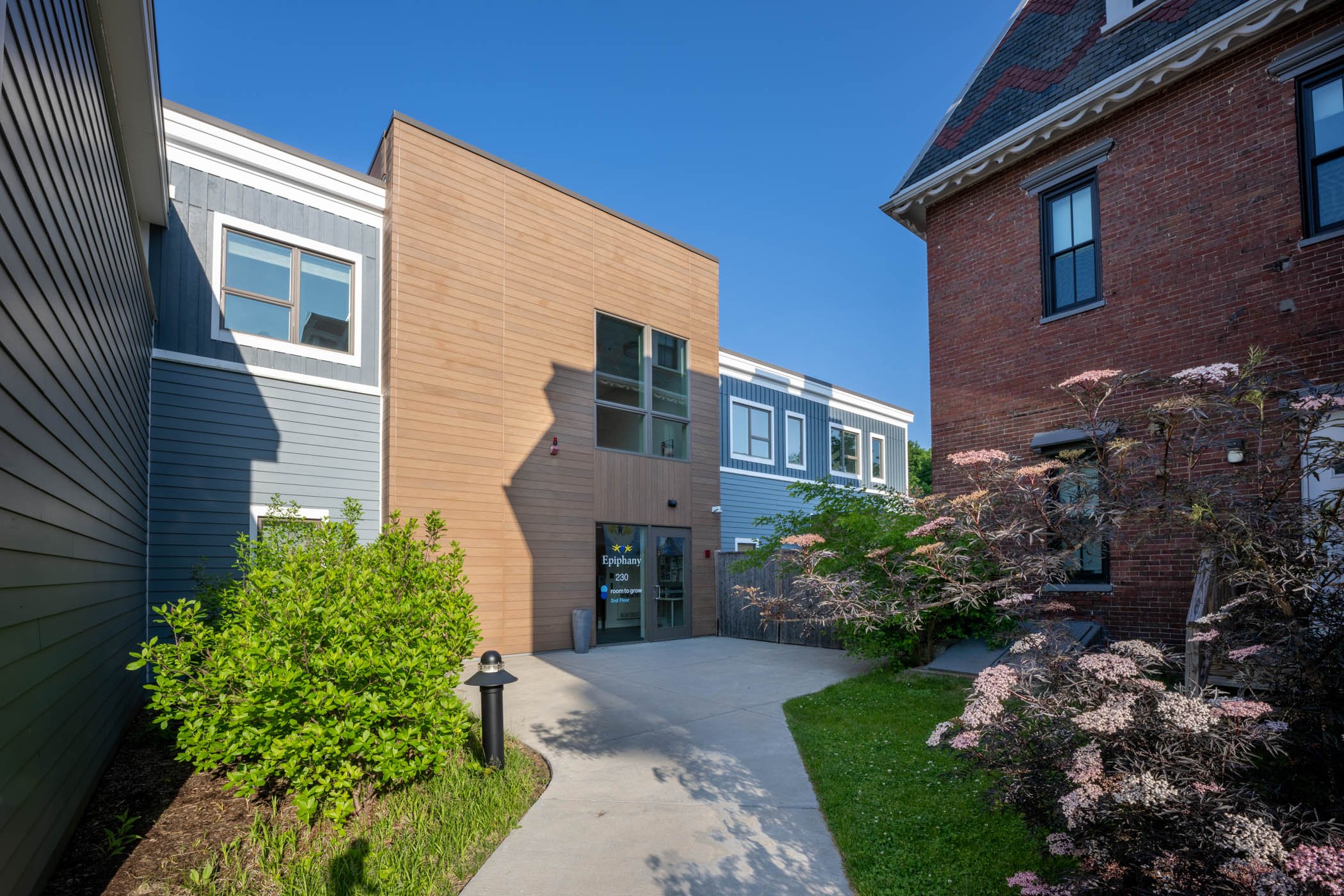
I’ve lightened the shadows - a big improvement but look at the blue cast of the shadow on the sidewalk

I’m warmed up the shadows by removing the blue cast for a much more pleasing photo
Professional photographers understand the significance of shadows in capturing the beauty and essence of buildings and outdoor environments. I typically utilize them to emphasize architectural details, add depth and dimension, convey mood and atmosphere, and guide the viewer's gaze. By skillfully incorporating shadows into my work, I am able to create compelling images that not only showcase the unique characteristics of the subject but also tell a visual story that engages the viewer.
I love nothing more than creating a great picture. If you need marketing photography for residential structures, commercial buildings, or landscapes, please call me, and let's make it happen.
On May 23rd, Adobe made a monumental announcement—quite possibly the biggest in its history. Their new Beta release of Photoshop incorporates the revolutionary power of Artificial Intelligence (AI) and has the potential to reshape the industry. What sets this software apart is its ability to edit by typing in prompts. Imagine simply typing in your desired visual element, and the software generates three AI-produced renditions—be it a graphic or a photograph. You can choose the one you prefer and even run the process again to create more refined versions.
You can also remove elements from a photo which is as important as adding things. If there's an area or item you wish to remove, simply highlight it, and use the new remove tool. AI takes into account the entire scene and replaces or fills in the missing elements. Look at the first image below - you see overhead wires and a parking sign that compromise the picture.

Look at the result - the overhead wires and parking sign in front of the tree are gone, but not only that - AI has repaired the building and tree so that you would never know those elements were ever there.

Let’s look at the reverse scenario where you want to add something to the picture instead of removing it. In the photo below I wanted to add a hat to the head of the gentleman in the blue shirt. I prompted the program to “add a hat” and it gave me several options. After a few attempts, I managed to achieve a somewhat satisfactory result, with the hat style and color I desired.


First hat

Second hat - notice that AI even adds in the necessary shadows based on the ambient lighting
Below I asked AI to remove a woman's sunglasses, which I didn’t think it would be able to do. In my opinion, it did a commendable job.


These are terrific examples but what I learned while working with the software is that when faced with more complex challenges the tool struggled significantly. Below is an example of where it struggled. I wanted to add furniture to this empty room so I mapped out an area and prompted it to add a bed - providing a very specific description.

I didn’t get the bed I wanted and despite repeated tries it could not deliver. I pressed on, asking for two matching light oak bedside tables and indicated where I wanted them.

As you can see below they aren’t light oak, they don’t match, and they aren’t the correct size.

The bottom line is that while AI in Photoshop is not yet ready for professional use, it holds immense promise and will undoubtedly become a game changer with time. In my experience to date, it succeeds about 70% of the time. It struggles with more complex requests and often the trained eye can see errors and imperfections that make it unsuitable for high quality work.
However impressive it is, it's crucial to acknowledge that, like any technology, this has potential downsides if used improperly. Irresponsible usage could foster misinformation and ill will. Consider the implications of adding a scar to someone's face in a lawsuit, potentially distorting the truth. Similarly, replacing a background with a location the person never visited or inserting someone into groups of unfamiliar people raises ethical concerns.
As AI progresses into the future, it will undoubtedly become an incredible tool. The ability to edit and transform images with simple text prompts will democratize photo editing, for better or worse. While many of you may have never used Photoshop or considered editing a photo, the day may soon come when it becomes accessible to everyone. AI is bound to stimulate both creativity and concerns. I would love to hear your thoughts on this exciting development.
I was honored to have my photography published in a recent article in South Shore Home, Life & Style magazine about a magnificent home built in challenging location. As always, I planned out a storyline and returned multiple times to capture each aspect of the house with the right light. From sunlight making a pattern on the kitchen floor to the relaxed, tranquil mood of their back deck, everything was planned and photographed with a purpose. Planning even extended to where and how the work might be utilized. For example, I shot some views in an additional vertical format to provide the option for cover shots.
The story follows below – it is interesting, and I hope you will take a look.


Cohasset’s rocky coastline is one of the town’s most distinctive features and its scenic outcroppings make for a dramatically beautiful landscape. On one particular peninsula of land, sits a beautiful custom home, nestled into the ledge and surrounded by conservation land.
“I actually had three clients who considered building on this site,” says architect Steve Meyers, of Studio Meyers Architecture in Hingham. He first sketched out plans for the “peninsula house” back in 2008, but for various reasons the buyer’s plans had fallen through. Ten years later, Hingham residents Don and Elyse Ryan came across the property while searching for a home by the water where they could retire one day. When local realtor Gail Bell showed them a copy of Meyers’ hand drawn sketch, they were immediately interested.
At the time, all that stood on the land was a tiny two-bedroom cabin with no heat. The parents of two sons, the Ryans knew that they would need a bigger house to fit their family. While the idea of building on the rocky landscape was intimidating, they saw potential in the spectacular location. They were also excited for the opportunity to work with a design team to construct a custom home from the ground-up.

Local builder Matthew Falconeiri, principal and owner of Falconeiri Construction, was recommended by Meyers for the project. “We had several builders bid on the job,” says the homeowner. “Matthew is a really smart, honest, down-to-earth guy and everything turned out just as we had hoped. People who come to visit us always comment about how well built the home is, from its solid construction to the finish work.”
“Our company specializes in custom homes,” says Falconeiri. “This project was definitely one of our more challenging builds because of the very limited footprint.” The first floor of the home had to be no wider than the prior home had been. To add more living space to the new home, Falconeiri’s team cantilevered out the second level by several feet.

The builders worked closely with Rivermoore Structural Engineering in Scituate to construct the home’s steel frame and secure it into the ledge. Another challenge of the waterfront location were the tides. “We knew that during certain lunar high tides the seawater could potentially rise quite high,” says Falconeiri. To solve this problem, the foundation of the home was designed like a Roman aqueduct, with a series of stone arches that allow the water to flow right beneath the home.”
The interior of the home features a plethora of woodwork and a very nautical feel. Designed as an “upside down” house, there are three guest bedrooms located on the lower level, while the master bedroom and main living areas are located up a flight of stairs on the second level. A great room connects the open kitchen and living room areas and features a vaulted ceiling and expansive glass windows all around.
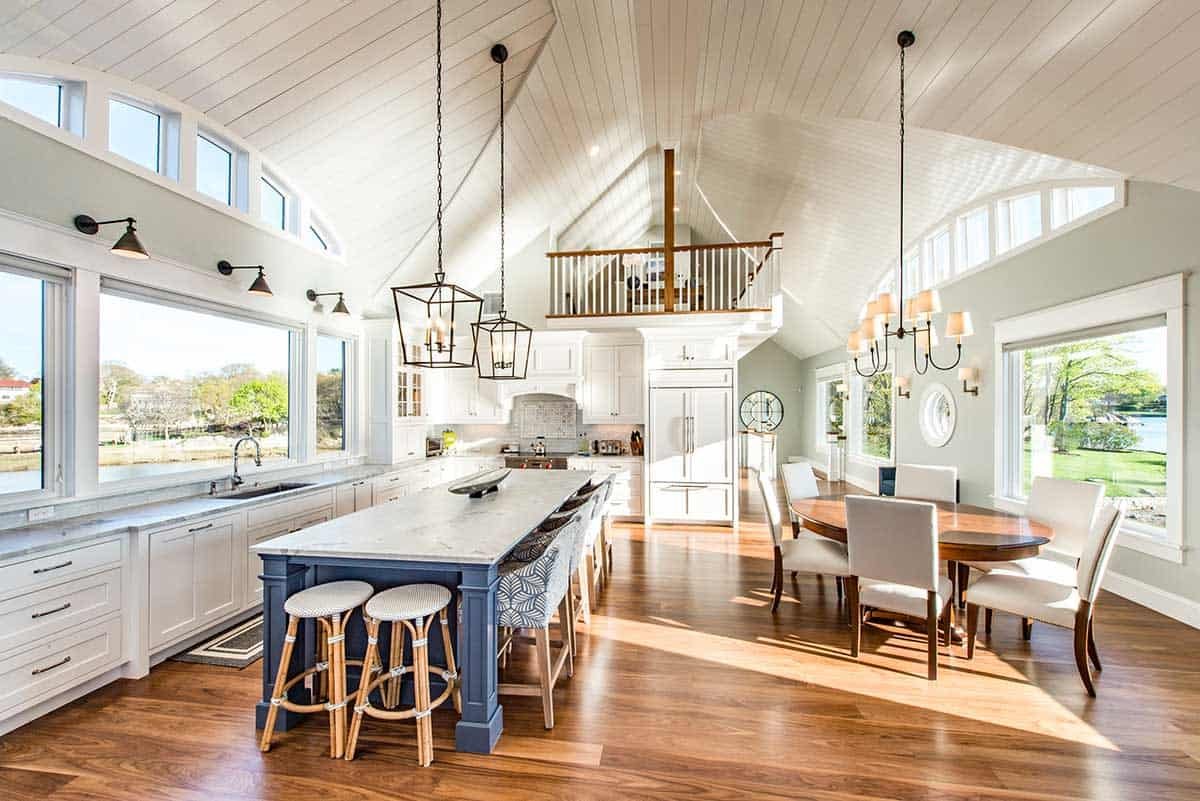
“There is easily a 300-degree view of the water,” says Falconeiri. “The home also has a lot of curves, which plays off the ocean waves. The home’s eyebrow windows were all prefabricated and had to be hoisted up. They were absolute monsters to put in.” On the third level of the home, there is an office loft and a cozy den with more spectacular views. Interior decorator Janet Shea of Janet Shea Interiors worked closely with the homeowners to design decor for the home and Faneuil Kitchen Cabinet constructed the home’s beautiful chef kitchen. Sean Papich Landscape Architecture worked on the home’s surrounding hardscaping and landscaping features.
The Ryan family moved into their Little Harbor home in the fall of 2018. “We pinch ourselves every day,” says Ryan, reflecting about how it feels to live in their new home. “We get to see the sunrise every morning and the harbor has become an extension of our home. We love to swim, fish, boat, paddle board and kayak. You can even catch striped bass right off the dock.” On warm spring evenings, the Ryans love sitting by the firepit on their back deck, firing up the grill and soaking up the salty air. “The views of the harbor are amazing,” says Ryan. “You feel like you’re on vacation.”
Click Here to View This Article on the South Shore Home Website

Shupe Studios Can Help You Tell the Right Story
If you are an architect, Realtor, builder, or engineer you need the right story to connect with your audience. It may be the story of a property’s unique environment and architecture, like this one, or it may be something else altogether. Whatever the objective, when I’m shooting, I’m not simply taking a series of pictures; instead, I tell a story.
On every project I offer two important services at no charge to you:
- A free brainstorming session to identify the right story.
- A free pre-shoot walk-through to stage shots, and identify opportunities to get the perfect narrative
At Shupe Studios our goal is to wow your audience. If you’re in the Boston area or greater New England, I hope you’ll reach out to me.
Companies have struggled to get employees back in the office post-Covid resulting in so-called “zombie offices.” With people few and far between and offices, even entire floors, nearly empty companies are asking hard questions. As leases come up for renewal many are downsizing their space and moving to new locations. It’s a heyday for movers, but can be bad news for landlords.
Smart property owners know that this is the time for marketing and are merchandising their buildings with professional photography and engaging marketing materials.
Read MoreForty years ago this month in 1983, I started my business, originally called Freelance PhotoImages. I was fresh out of college and due to the November 1982 recession recently released from an assistant position with a well-known Newbury Street photographer. To keep up cash flow, I spent the next four months bartending, stocking shelves at Toys “R” Us, and helping out at a mom-and-pop color lab called Panna Photo which offered large format prints. One of their clients used the lab to print tradeshow prints, and after learning I was an RIT grad, offered me a job shooting their products. While I had all the necessary camera equipment, I didn’t have the required lighting equipment needed in the days of film. At the time, the equipment cost a substantial sum which I didn’t have, but a family friend offered to loan me the money.

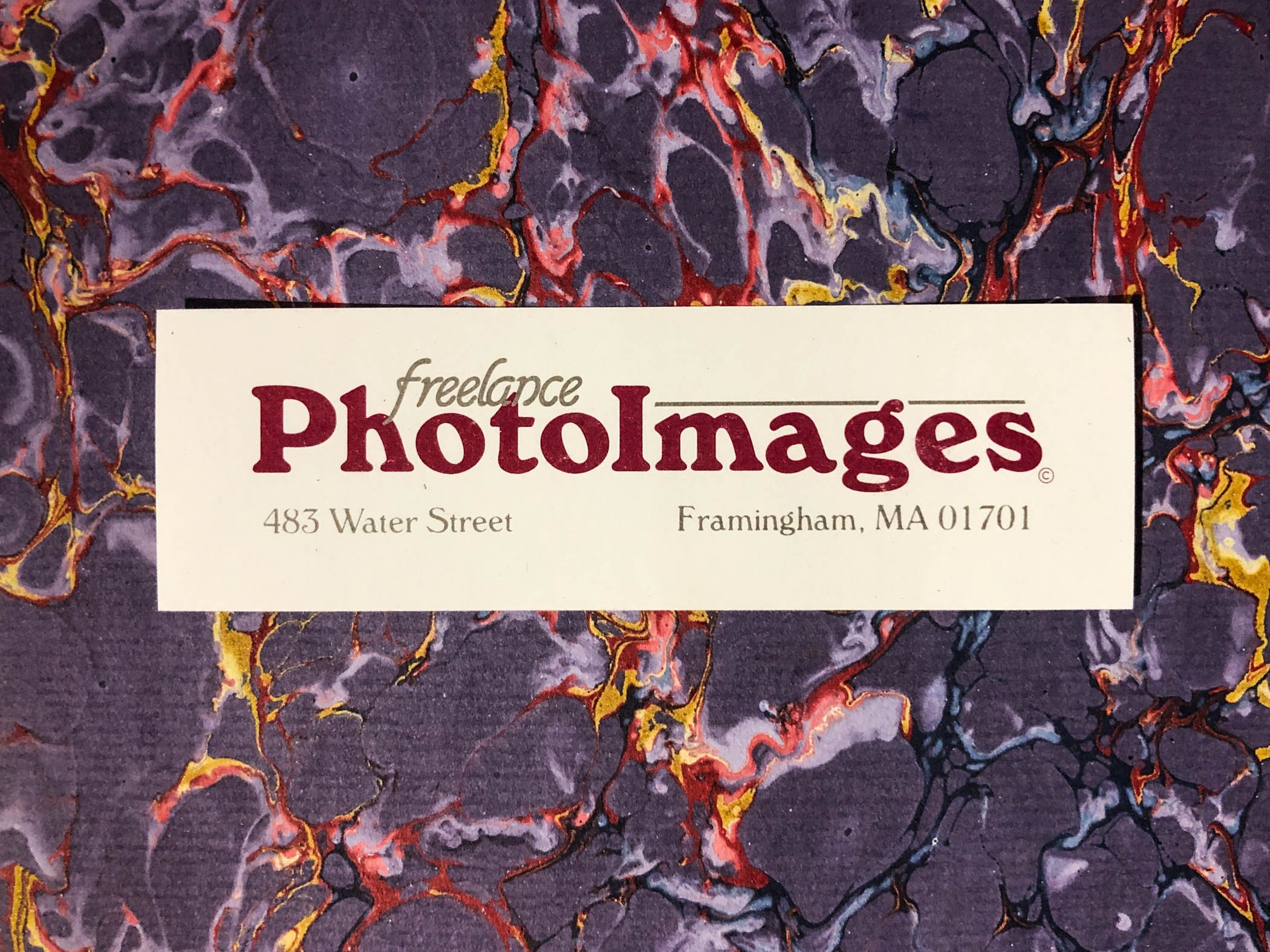
I remember talking with my girlfriend (wife now) explaining that I was thinking of borrowing the funds, buying the lights, and going into business. I reasoned that we had very little debt, no car payments, no mortgage, and no children. What was there to lose? She agreed, and the business was born.
From day one, I decided to do only corporate work – no weddings, bar mitzvahs, or anything of that nature. I offered lifestyle, product, and architectural photography, plus executive portraiture. My marketing strategy was straightforward – offer a superior product at a fair price and deliver it on time. It worked. A year later, after marrying Deb, we purchased the Framingham house, which had an unfinished 28’x48’ two-story garage next to it. We spent the next few years building out the garage and turning it into a first-class studio. It had 11-foot ceilings, a dressing room/bathroom, and large office/conference area on the 2nd floor. I did all the construction myself with the help of friends. I was bootstrapping and financed all construction materials from business profits as they came in. No additional loans.

In the high-tech heyday, I was knee-deep in product photography, and the studio got a lot of use. I also did a lot of location shooting, frequently setting up in a conference room or on the production floor. Business thrived until the internet bubble burst, and it was clear that my company had to adapt. I researched moving into digital photography, which was still in its infancy, but I clearly saw the benefits. To go digital meant a $50,000.00 investment that could be obsolete in a year, given the rapid pace of technology. However, it took out the middlemen making digital film scans, and I’d have much more control.
In 2000 I took the leap when Nikon came out with its first professional DSLR. Along with it I purchased a top-of-the-line Mac computer and editing software. Digital allowed me complete control from concept to deliverable – and no film lab to screw things up. I did one last job on 4 x 5 film and have never looked back.
At about the same time, it became increasingly clear I should specialize. So, I threw a virtual dart at the wall, and it landed on Architectural Photography. That ended up being a really good dart. Soon after, we went through another recession, which put a lot of studio/product photographers out of business. Ironically, commercial construction has a seven-year cycle - concept to occupancy. That meant many of the buildings I was shooting were completed in the peak years of the recession. Fortunately, I learned that while people were willing to forego product photography, an architect or builder would not cut corners when photographing their multi-million-dollar buildings. Even the smaller firms who were stretched thin on their projects knew they had to look like the big guys when it came to marketing, so using a good professional photographer was an expense they were willing to incur. Hence my business weathered the storm.
As my business evolved, I decided to rename it - transitioning from Freelance PhotoImages to ShupeStudios. The word Freelance didn’t have the professional connotation I wanted, and I learned there was another PhotoImages out there. The name was right when I launched the business; however, the time was right to professionalize the name while making it more personal; and I rebranded as ShupeStudios. People liked the new name, it rolls off the tongue, and is easy to remember – I’m glad I made the switch. This is what my new logo looked liked like for many years but as you can see from the top of this post its evolution continues.

In 2020, with my children out of college, we decided to downsize out of our beloved Framingham house/studio. The house was too big, and shooting primarily architectural work, the studio was not getting used. On occasion, when I do studio work, I can use other spaces but most of the time all concerned find it easier to shoot at the client’s location.
You may ask where I anticipate going from here. The short answer is that I love my job, so plan to keep shooting. I’m always learning, always improving, always seeking out new technology.
One of the few things that has not changed is my marketing strategy which is as good today as it was 40 years ago – offer a superior product at a fair price and deliver it on time.
Forty years later, and the best is yet to come.
With that said, let me close with the question I always ask my clients - How can I help you today?
Gregg
Photographing objects and people in motion has myriad uses in advertising and marketing. It adds interest to shots and reflects the world we live in - a world of motion. I also find that motion adds energy to photos and lends a different connotation than one where the subjects are entirely at rest. Let me show you how you can make it work for your business.
Read MoreMy grandmother taught me the joy of sending holiday cards when I was about seven years old. She said making one’s own card was a way to share your creativity and to put a smile on people’s faces. My first card had a live pine twig with a drawn ornament below it. I remember that envelope being a bit thick and uneven. Over the years, I have kept this tradition alive as a way to stay connected to friends, colleagues, and clients from around the world. It is my way of reaching out and thanking people I care about while adding a little fun to the season. Let me show you the behind the scenes of how I created it.
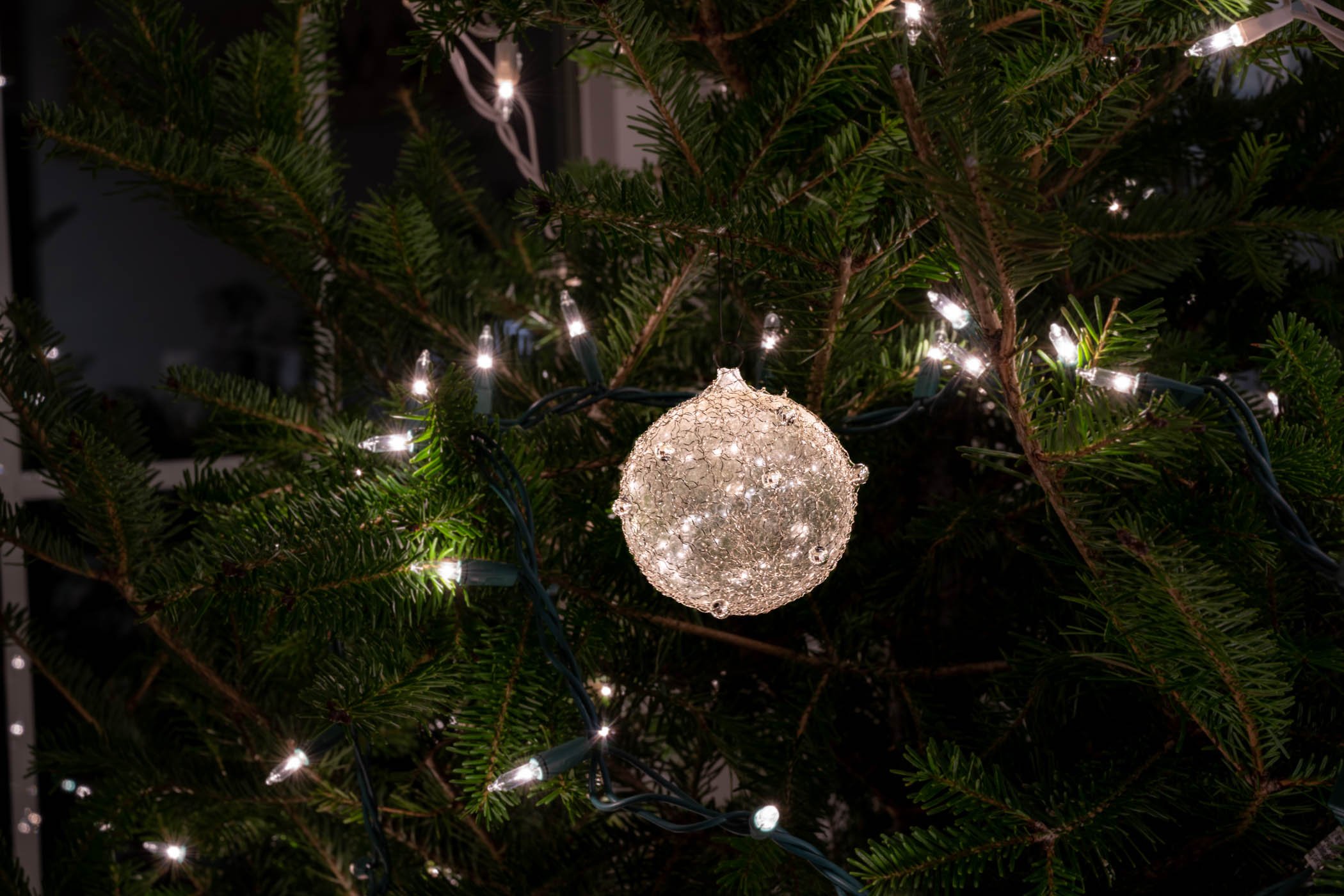
The cover this year was simple and traditional. An ornament passed down from my great grandmother’s family. I worked on lighting and composition to give the ornament an effect of almost floating in space.

The inside imagery is a bit more complex and is composed of four separate and distinct images - three from our trip to Iceland this year. The first image captures Icelandic horses galloping in southern Iceland adjacent to the Seltún hot springs.

The second is a lovely shot from one of our Airbnbs as we criss-crossed the country.
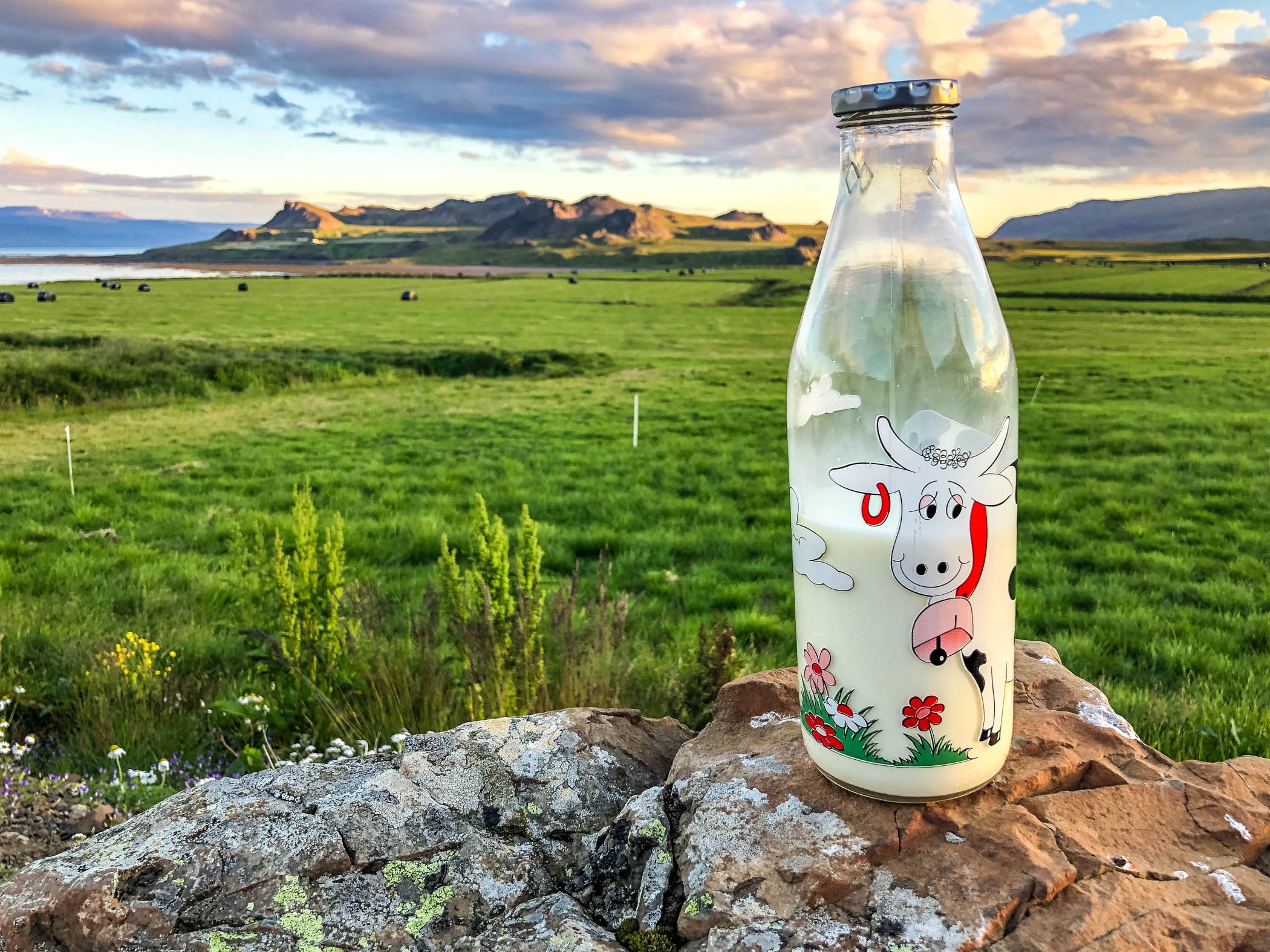
At another Airbnb in Iceland, the owner provided cereal and milk for breakfast. When I saw this milk bottle, I couldn’t resist and took it outside for an extraordinary photograph. I knew I’d find a way to eventually use it.
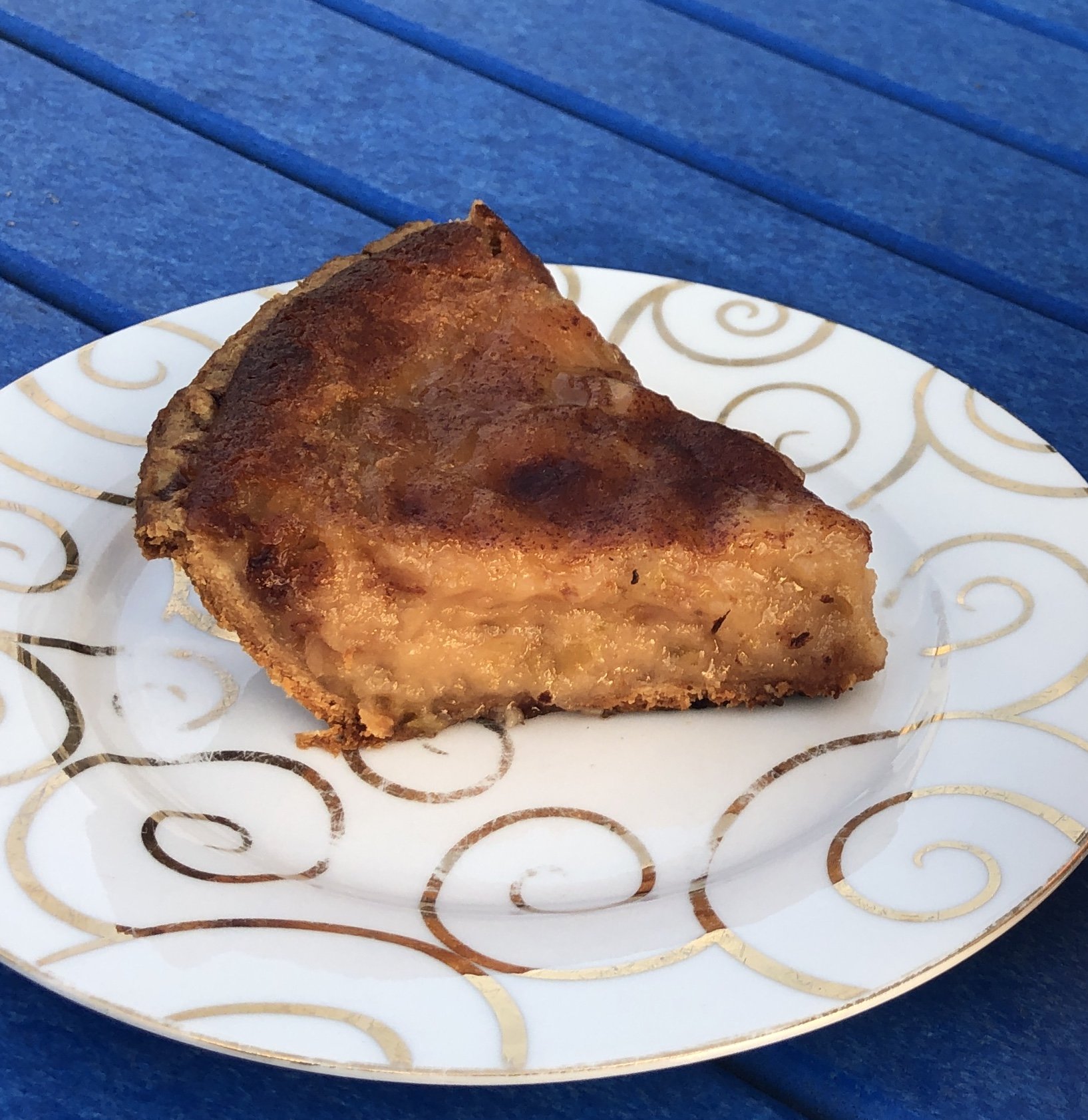
The last picture came not from Iceland but from Gloucester. This is a freshly made slice of apple pie photographed in natural light on a plate from the former Gloucester Ocean View Inn and Resort.

Here is the final composite image, which entailed removing the fence posts, silhouetting the pie and plate, the milk bottle, and stone, and subsequently dropping them onto the background. Adding the horses and merging the grass took a bit of finesse.

John Salozzo, (a friend, retoucher, and pioneer Photoshop composer) and I worked on a few cards together in the early days. He liked to include family members, especially our children into the cards. Which in one form or another, I have continued to this day.
The back of the card is composed of 7 images. The background is a glacier at the Jökulsárlón Lagoon near Vatnajökull National Park in Iceland. The images include my children - the wedding of my son Ben and his wife Alex, and Kristen and her horse. The pie making images are all from Gloucester, while the background of the pie recipe was picked from one of the apples.
I think my grandmother would like that I’ve kept her tradition alive. She would have loved that the card included family, a little creativity, and a heartfelt message. Even more, she would have hoped, as do I, that it brought smiles to you and your family.
One of the many things I love about being a professional photographer are the people I meet and the places it takes me. Looking back at 2022 I thought you might enjoy seeing this year’s top ten. Since most of my work tends toward architectural photography, my favorites begin with buildings.


Home
Houses are buildings of course, but they’re a little but different. The interesting thing about houses is that people take them, stamp them with their personality, and make them uniquely their own. In the process a house becomes a home. Here are a few of my favorites - places uniquely called “home.”
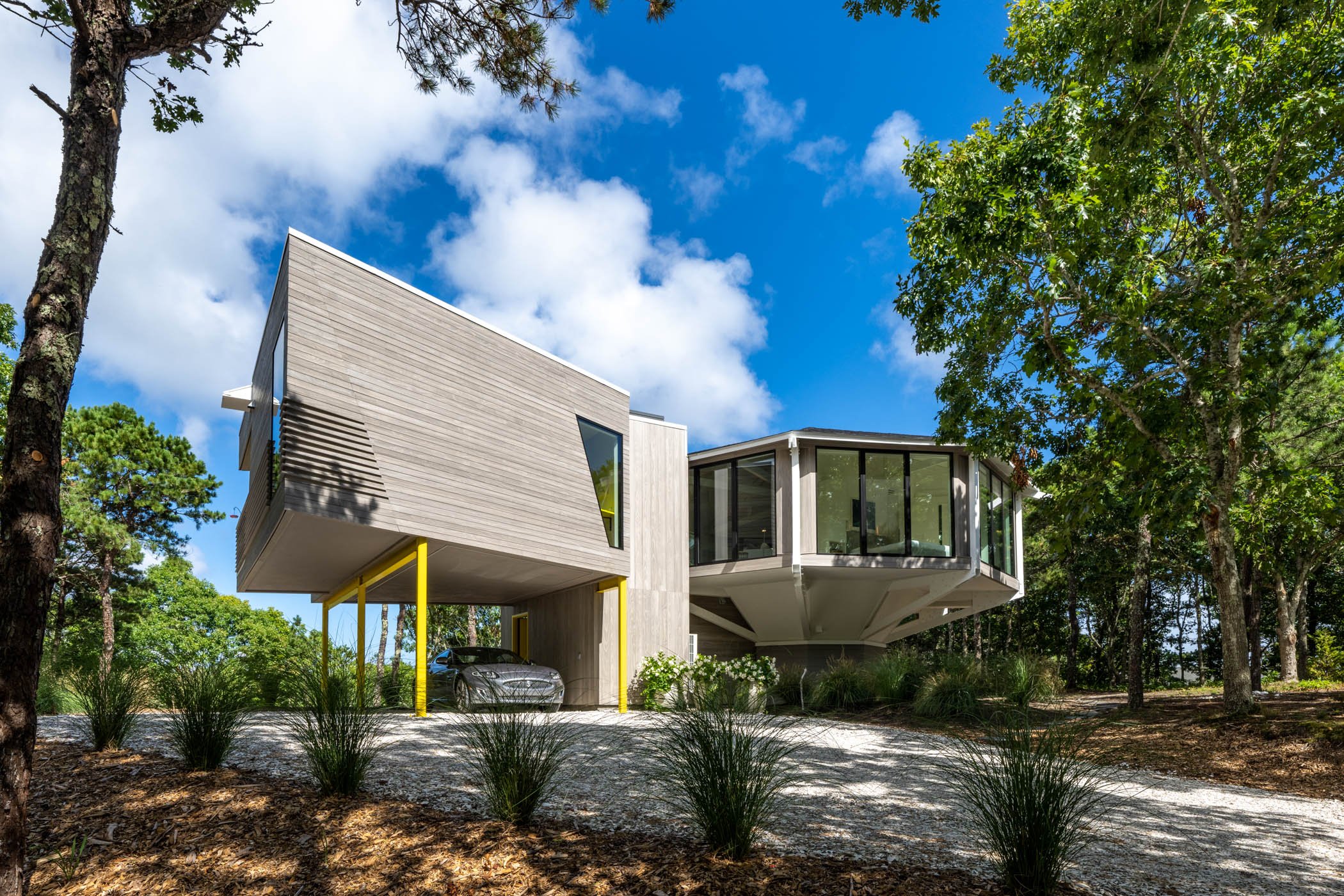


People at Work
We spend a big part of our lives at work, but since we do it everyday we think of it as commonplace and unremarkable. However what we do is quite remarkable, and I love recording it. Here are two of my favorites.


The Horizon
One of the amazing things about the times we live in are views we have, that no person could have experienced 120 years ago. The first flight hadn’t taken place and there were no skyscrapers. If you wanted a birds eye view the best you could do was hike up a mountain. You couldn’t look out your window and see for miles, and you certainly couldn’t look down on a city from the sky.


Man’s Best Friend
The bond between man and dog is a unique one. Our dogs are always so happy to see us and so excited to go out and play. They never fail to put a smile on our face and I never pass up the opportunity to catch a dog doing what they do best - having fun.

2022 was a year unlike any other with unique events, challenges, ups and downs - and a whole lot more. I’ve been very privileged to capture a small part of our world and thank all of you for that opportunity. I look forward to 2023 and my best wishes to you for a wonderful year – hopefully the best yet.
Sincerely,
Gregg
On October 28th, Adobe released it latest update to Lightroom. While many of you will never personally use this software it has big implications for what we can do to provide you with better images. The most impressive new feature, select subject, allows you to isolate people, objects, backgrounds or combinations and then independently adjust exposure, color balance and a host of other variables. In the past there were crude ways to do this but they were painstaking and working with architectural elements like windows and rooms was formidible. Let me give you an example starting with an original non edited HDR image. In this case the room was dark to start with and the light from the window exacerbated the problem causing the room to be grossly underexposed and the exterior view overexposed. A first glance this is an unusable shot. But wait maybe not…
Read MoreThis time of year the days are rapidly getting shorter while the sun gets lower and lower in the sky, playing havoc with architectural lighting. Let me show you how to deal with it.
Read MoreHow to build your business online with an easy to use tool that tells a story and creates your own webpage all at one time
Read MoreWe’re all familiar with PowerPoint presentations. Often text heavy with lots of bullets they seldom inspire. However, if you want to distinguish yourself or need to sell an idea, try an approach I call - showing instead of telling. It means banishing those bullet points and instead using pictures to tell a story and engage your audience. Let me show you how easy it is to supercharge your presentations with a few simple tips.
Read More